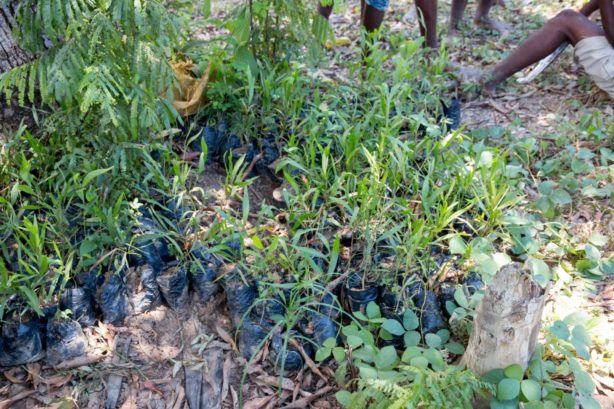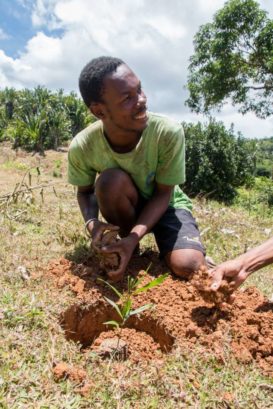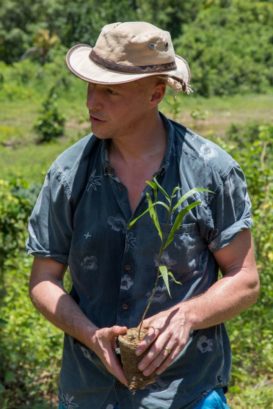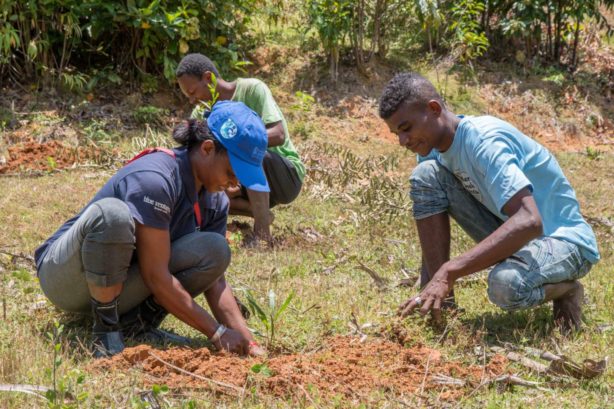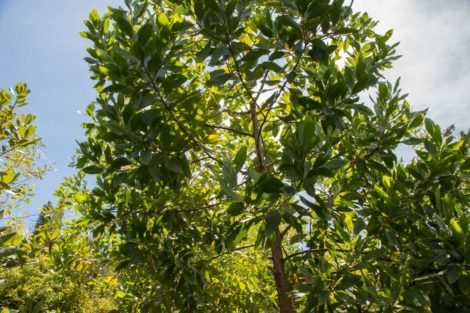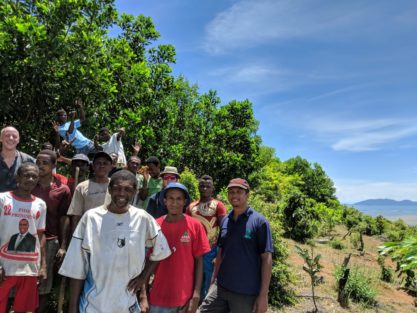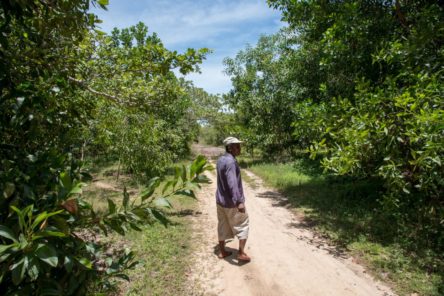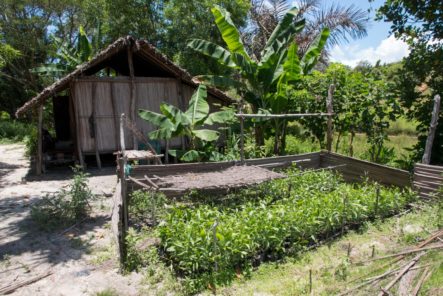This post is also available in:
 French
French
I am a forestry technician by training, and for 25 years I’ve been supporting communities to restore and replant forests, especially in the Diana region of northern Madagascar, where I have spent most of my educational and professional life. As I approach my retirement, I’m feeling particularly proud to have worked for the last four years with coastal communities on a special reforestation project, through my role with Blue Ventures in Ambanja. If you do not mind, I’d like to tell you a story to explain why.
Recently, I organised a tour of village fuelwood plantations in Tsimipaika Bay, northwest Madagascar, to assist and support the communities with the planting of new trees, and to show my colleagues who were visiting from the UK.
After the planting, I led the group for several kilometres through hills and degraded plains, under an overwhelming sun and a stifling heat. There was not the slightest shadow because there is no forest left, except a few fan-shaped “traveller trees” (ravinala in Malagasy). These ravinala are often the only trees that can be seen growing in the deforested landscapes of northern Madagascar, and provide a welcome respite from the fierce sun. But after two hours of walking, the visitors could no longer hide the fatigue on their faces.
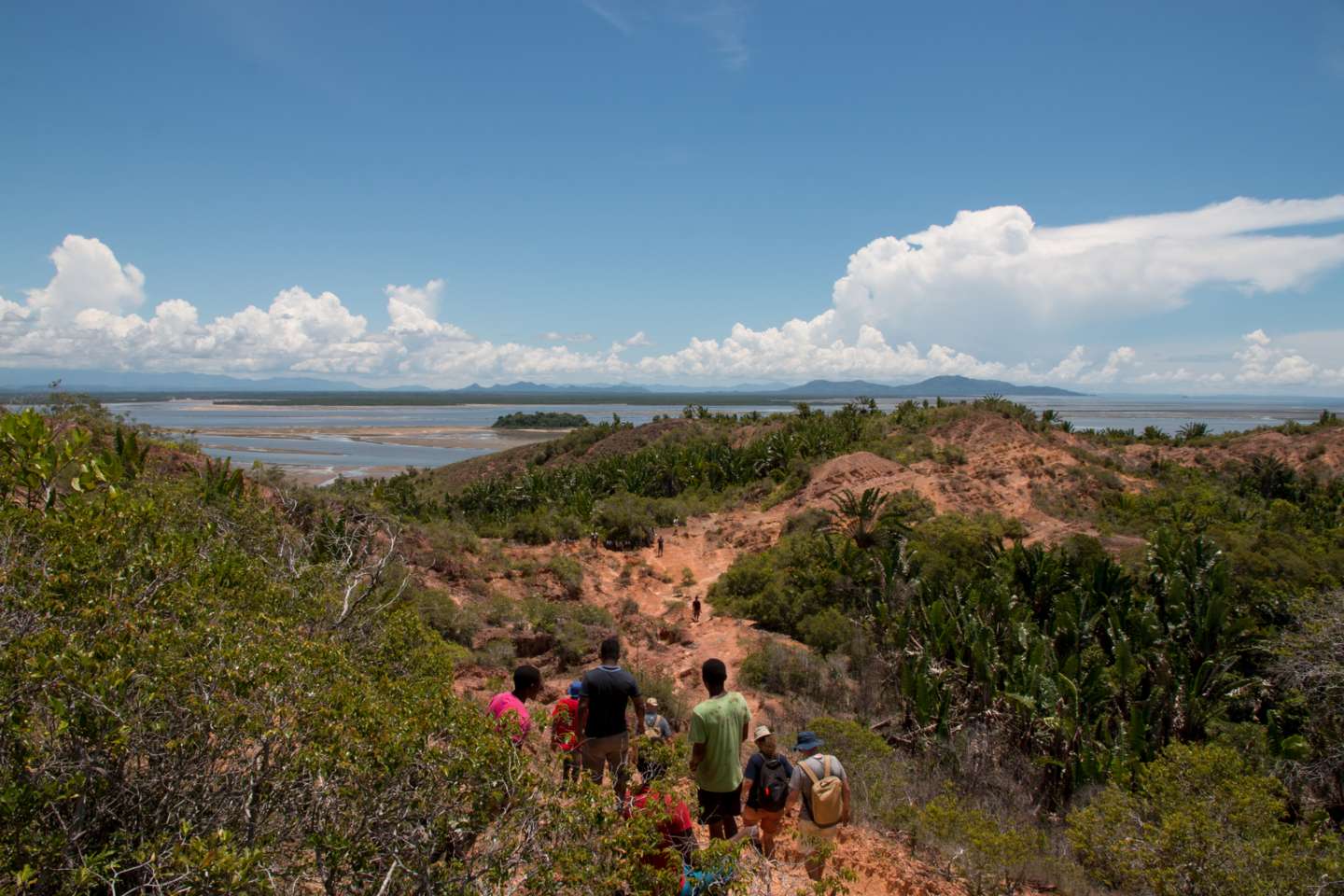
Photo: Ben Honey
On arrival, at the top of a hill, everyone felt a great relief. My UK colleagues immediately headed for the shade of some young trees to cool down, from under which they enjoyed a light breeze and a magnificent view of Tsimipaika Bay, dotted with small fishing villages.
They did not know they were sitting under some brown salwood trees (Acacia mangium) planted by Paul Marisy, a grower in the nearby village of Ankingabe. Though only two-years old, these evergreen trees are already attracting attention on the hill top, at an impresssive ten centimetres in diameter and five metres high. I explained that Paul started the fuelwood plantation in 2017, convinced of the need to reforest. There is almost no forest or woodland left in the local area, except the mangroves along the coast – and those mangroves are also increasingly depleted, because of the manufacture of mangrove charcoal.
Deforestation in Madagascar is occurring at an alarming rate, and is continuing to increase. In 2013, the annual rate of deforestation was 1.50%, or the equivalent of 176,000 football pitches of forest per year. The three main causes are shifting cultivation, illegal logging (especially high-value timber), and the production of fuels such as charcoal and firewood.
Wood is an indispensable natural resource for the majority of Malagasy communities, especially for fuel for cooking, and for timber to build their homes and furniture
Wood is an indispensable natural resource for the majority of Malagasy communities, especially for fuel for cooking, and for timber to build their homes and furniture. But there is a growing imbalance between supply and demand. With accelerating population growth, demand is increasing, and the production of wood, from natural sources or from plantations, is no longer sufficient to satisfy needs. The situation is all the more worrying because forests help to maintain healthy ecosystems and human well-being by protecting soils against erosion, conserving vital water sources, purifying the air, and sequestering atmospheric carbon dioxide which helps to mitigate global climate breakdown.
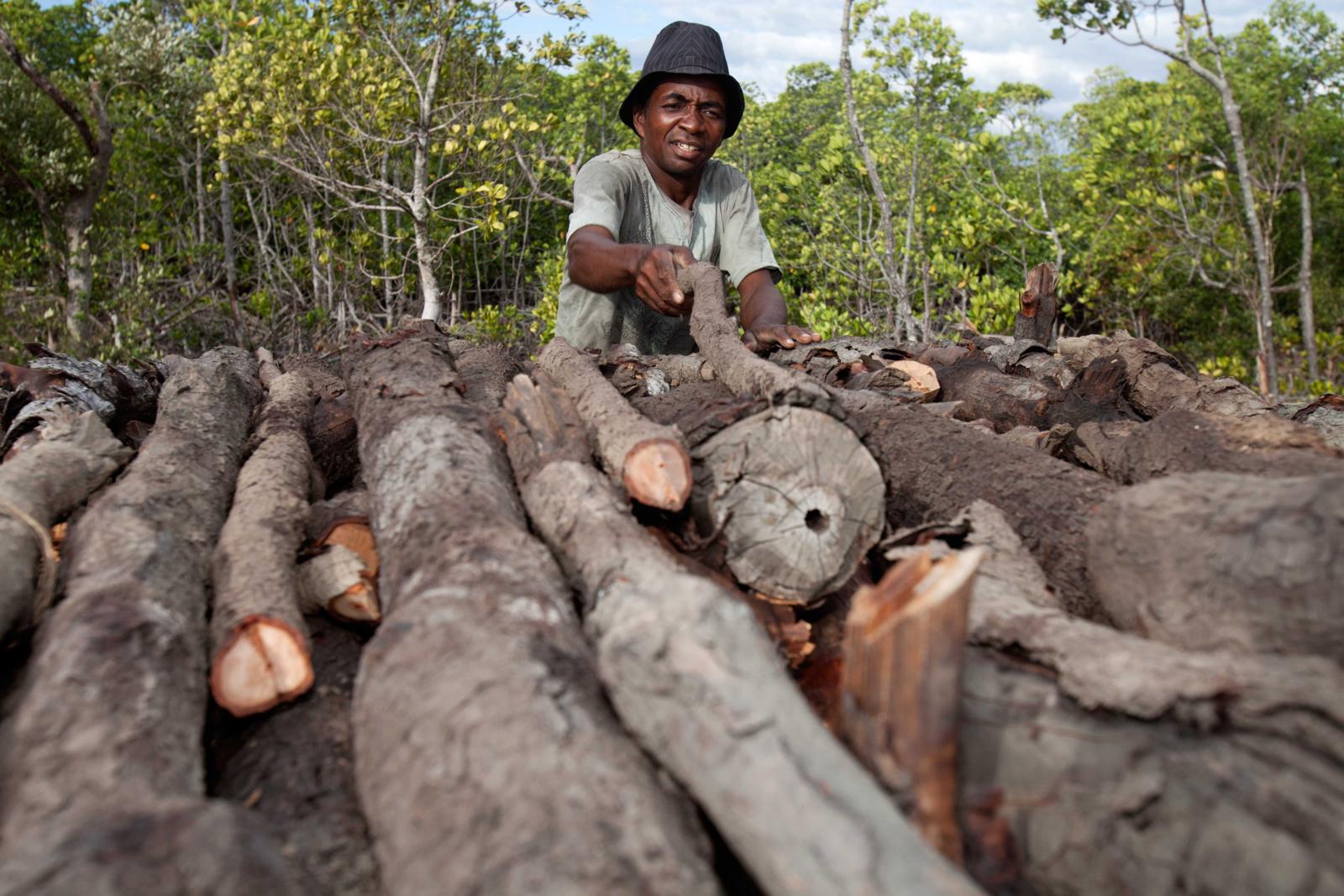
Photo: Garth Cripps
The Blue Ventures team in Ambanja, whose goal is to “collaborate with communities in Tsimipaika Bay to innovate and develop sustainable management of their natural resources,” supported the development of fuelwood plantations with 17 individual producers in the village of Ankingabe. Brown salwood, a fast-growing tree species that can be harvested just five years after planting, was chosen for the plantations. A community leader manages this initiative, organising the community to establish a brown salwood nursery in the village. This model has since been replicated in three neighbouring villages.
It sounds simple, but how does this project work? The nurseries are set up in September, the end of the dry season, with the help of volunteers who are compensated for their work. Community leaders take charge of organising and mobilising the growers, the daily watering of the seedlings, the construction of shade screens to protect young seedlings, and general maintenance of the nursery. After three months, the plants are large enough to transplant.
The biggest challenge for producers is this last step; transplanting trees takes a lot of time, especially for growers whose fields are far from the village, accessible only by steep paths. And as plantations do not provide any financial income for the first five years, the growers must also devote themselves to other livelihoods such as fishing and farming to stay afloat.
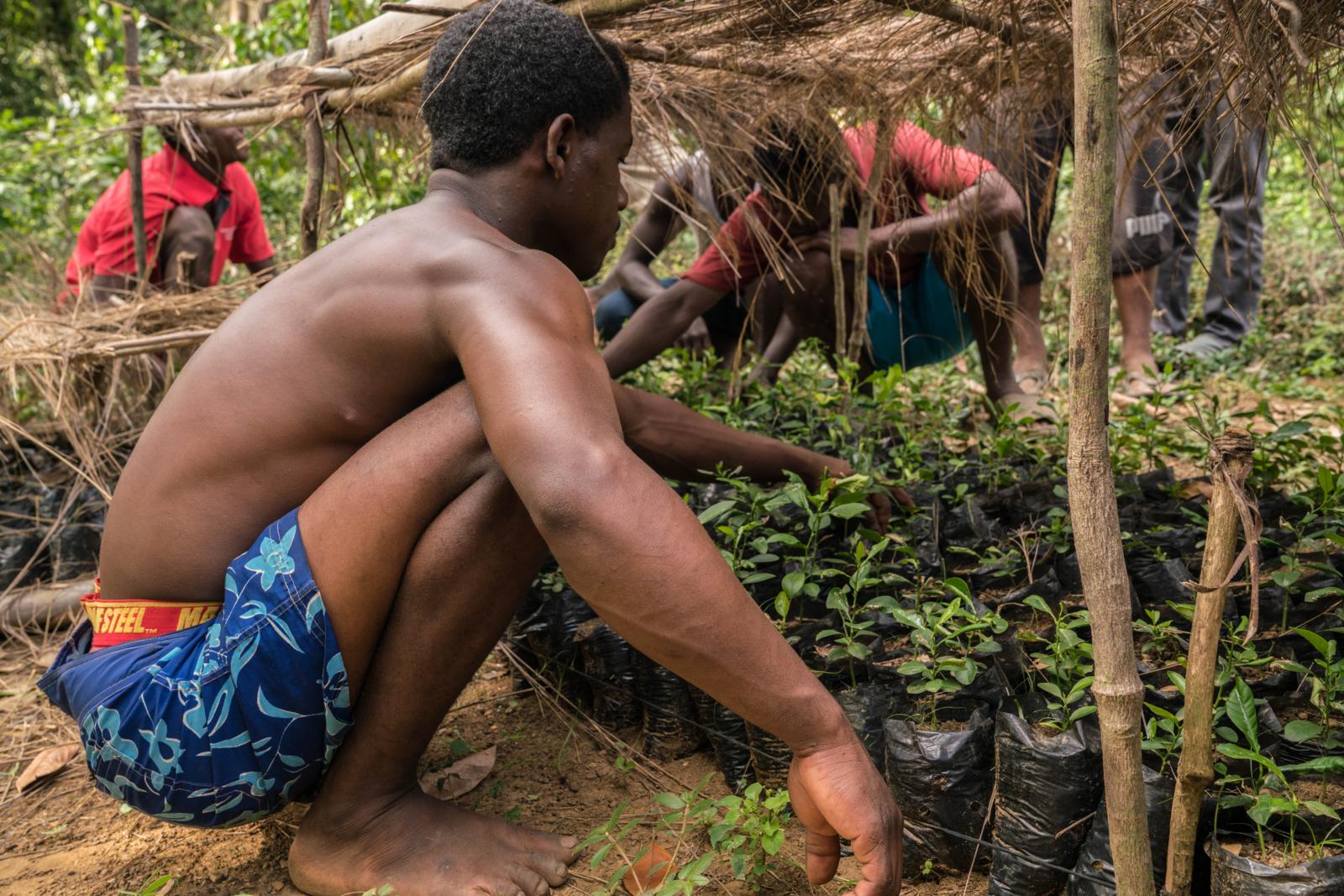
Photo: Leah Glass
To help motivate landowners to set up a plantation despite the long wait, Blue Ventures supports them in the administrative procedure for obtaining a land title from the authorities. This secures their rights of access to land and resources, without fear of being expelled by the state and seeing their plantations and property destroyed. Nine land titles have been officially granted to village producers, and thirteen more are in progress.
This incentive system, in combination with the contract of mutual commitment signed between each producer and Blue Ventures securing the whole technical and administrative process, is giving growers the confidence to invest their time and work.
These efforts are already bearing fruit. The first plantations are doing extremely well, with very high survival rates for the saplings. The forty fuelwood growers in the four villages remained motivated, and approximately 72,000 trees have been planted on a total area of approximately 70 hectares since 2016. All growers are ready to continue this project in the coming years to meet the fuel needs of their communities and their descendants.
My greatest wish is to see these communities, and their forests, flourish. Now I can retire with a calm heart, confident that this initiative will be replicated in many other villages that need it so much.
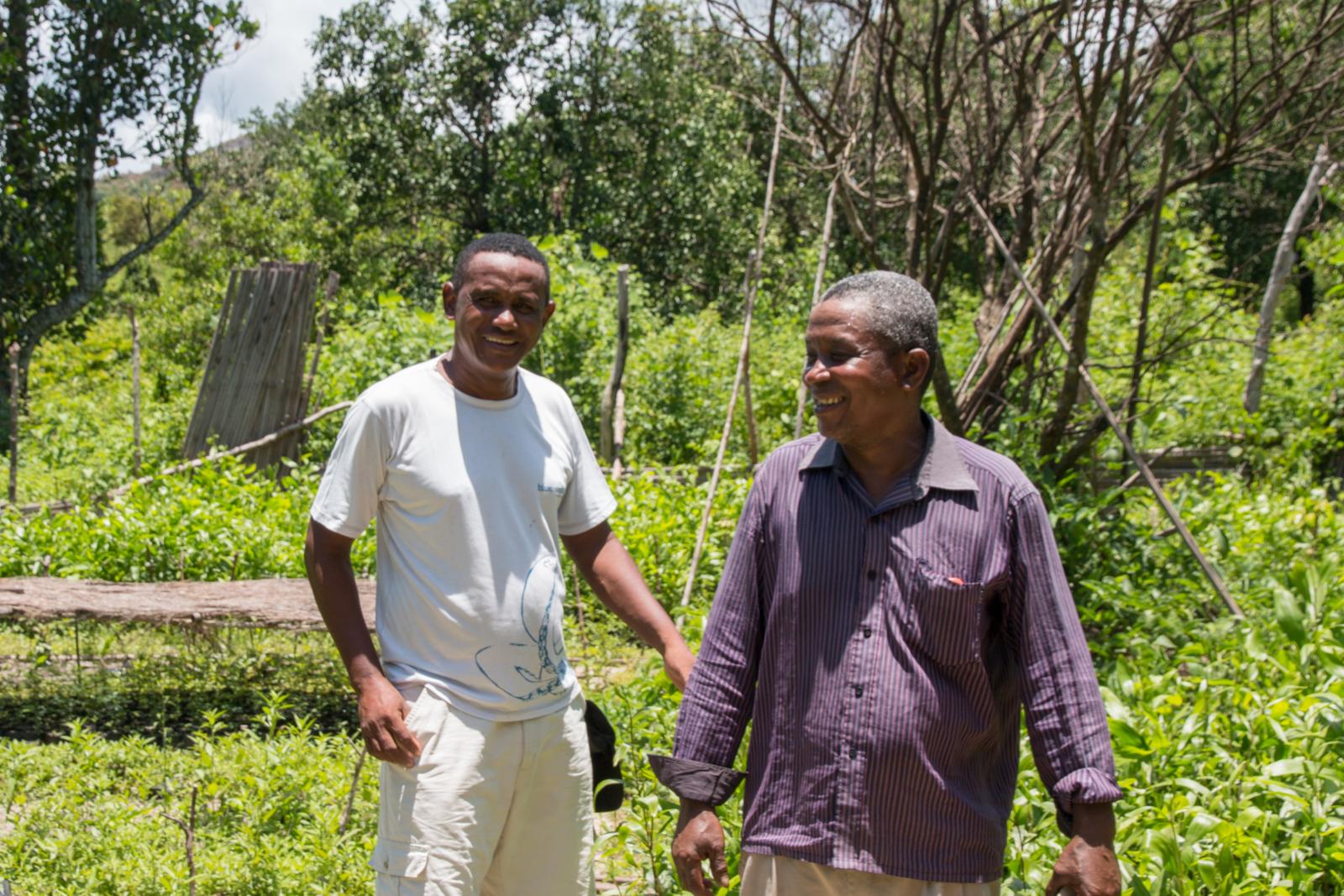
Emmanuel (left) with a grower (right) in his brown salwood nursery | Photo: Ben Honey

This project was funded by UK aid from the British people, and the GEF Blue Forests project.
Find out more about the amazing brown salwood tree and how it can help save Madagascar’s mangroves!


